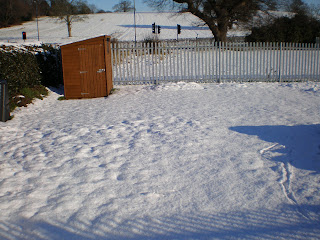January is generally a fairly quiet time in the Allotment. But you need to push on with your digging and manuring whenever the weather and the state of the land permit. You should also prune and begin to spray your fruit trees, if you have not already done these jobs. But January is a time when you should be thinking and planning, ordering your seed potatoes, vegetable seeds, fertilizers and so on, and making sure that your tools are in good order and that you are ready to begin gardening in real earnest next month, or as soon as local conditions will let you.
Before coming to the various jobs of the month, there is one really important matter that we should say something about––the condition of your soil and the great need to keep it in good heart, for we must not expect to go on producing satisfactory crops year after year unless we restore to the soil what the plants take from it. We must also keep the soil in "good tilth."
What is GOOD TILTH?
It is the top foot or so of soil got into a "crumbly" condition. The "crumbs" hold a lot of water on their surfaces and let surplus water drain away quickly through the big pore spaces between them. These spaces supply air, which the roots need as well as water. When rain falls, the uppermost "crumbs" soak it up till they are saturated––like blotting paper dipped in water. Then the surplus soaks downward to the "crumbs" immediately below, and so on. Each "crumb" is like a little sponge. If there is more rain than the "crumbs" can hold, the bigger spaces between them allow the extra water to drain quickly downward and the soil does not become waterlogged. The roots of plants in "crumbly" soil can grow easily down the air spaces between the "crumbs." All around them are "crumbs" containing the water the roots need. At the tips of the roots are tiny hairs which absorb water. So you will see how important it is that the tips of the roots should not be damaged when planting out.
THE VALUE OF HUMUS
What is "humus"? It is a formless material made up of tiny particles produced from the remains of plants and animals when they have decayed. It helps to maintain a "good tilth" and thus ensures good aeration. But it does more; it helps the soil to remain moist and provides plant foods.
 It was just like a Christmas card.
It was just like a Christmas card.